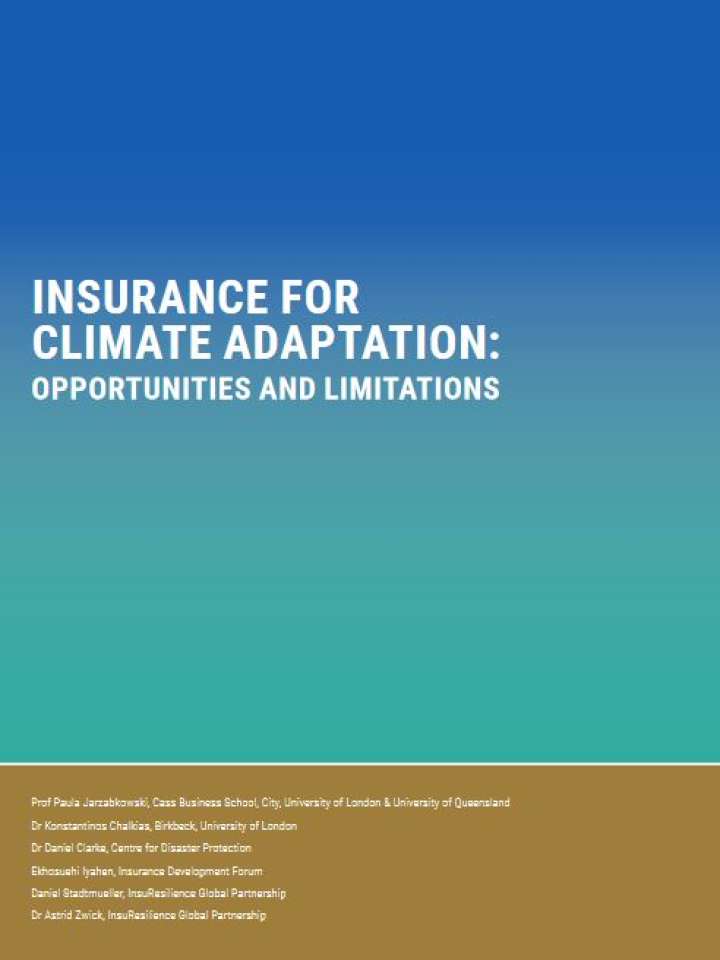Insurance for climate adaptation: opportunities and limitations 2021
Using insurance is a step away from crisis towards risk management, and it strengthens socio-economic resilience under a changing climate. However, it is only one of the available disaster-risk financing mechanisms. It thus needs to be considered within a broader fiscal framework that also includes international assistance, catastrophe debt draw-downs, and other financial securities, disaster reserves and budgets. Furthermore, insurance and other disaster risk financing mechanisms are only part of the solution: they need to be integrated into other resilience and adaptation mea-sures as part of a comprehensive climate adaptation strategy. In this report, the authors make recommendations to maximize the benefits of insurance for climate adaptation:
- Recommendation 1: Invest in open-source models that provide a long-term view of climate risk and link to insurance solutions.
- Recommendation 2: Joined-up policy-making to put climate-risk models at the heart of national adaptation strategies.
- Recommendation 3: Develop consistent climate adaptation regulation and standards across countries.
- Recommendation 4: Foster insurance innovations that can respond to a changing climate risk landscape.
- Recommendation 5: Strengthen dialogue between insurers and policy-makers around Build Back Better.
- Recommendation 6: Converge insurance, humanitarian and development agendas.
- Recommendation 7: Promote and invest in risk literacy throughout society.
Explore further
